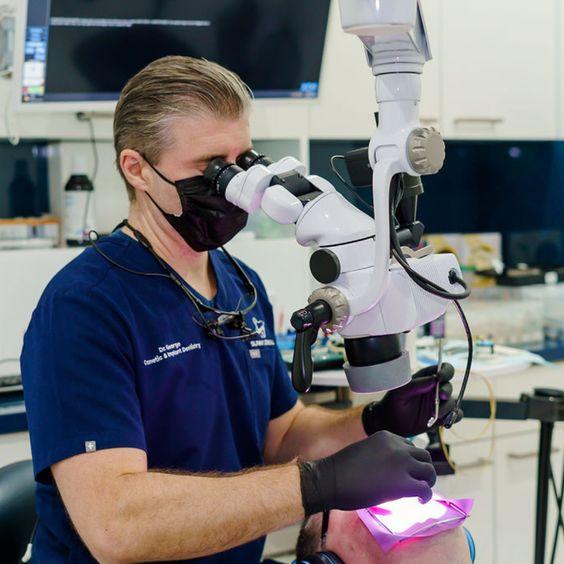According to Regional Research Reports, the Global Low Vision Aids Market is projected to reach multi-million USD by 2030 from a million USD in 2021, growing at a CAGR of 6.80% from 2022 to 2030.
This report also provides the effect of the recession, Inflation on the market, sanctions, and trade war between various countries. This report can provide the estimation and suggestions of various organizations such as the IMF, World Bank, WTO, and others. In addition, it Includes profitability charts, SWOT analysis, market share, and detailed information on the regional spread of this business. Moreover, the report analyzes the insight into the current market position of prominent players/companies in the competitive landscape of this market.
Request Sample Copy of this Report: https://www.regionalresearchreports.com/request-sample/low-vision-aids-market/HC-1552?utm_source=free&utm_medium=harsh
Major companies and vendors included in the Low Vision Aids Market are:
- Eschenbach Optik GmbH
- Vispero
- Quantum
- Aumed Group Corp
- Wipac Ltd.
- Vision International
- Enhanced Vision
- Esight
- HumanWare
(Note: we include the maximum-to-maximum companies in the final report with the recent development, partnership, and acquisition of the companies.)
Comprehensive Market Segmentation:
By Type
- Optical Aids
- Non-Optical Aids
- Electronic Aids
By Application
- Hospital Pharmacies
- Optical Stores
- Retail Pharmacies
- Online Pharmacies
By Region
- North America
- Asia Pacific
- Europe
- South America
- MEA (Middle East &Africa)
Direct Purchase Report: https://www.regionalresearchreports.com/buy-now/low-vision-aids-market/HC-1552?opt=2950&utm_source=free&utm_medium=harsh
Types of Low Vision Aids
- Optical Aids: These include magnifiers, telescopic lenses, and high-powered reading glasses designed to enlarge visual information.
- Magnifiers: Handheld or stand magnifiers for reading small text.
- Telescopic Devices: Used for distance viewing, such as for recognizing faces or watching TV.
- Electronic Magnifiers: Portable or desktop devices that use cameras and digital screens to enlarge objects or text.
- Non-optical Aids: Tools like reading stands, proper lighting, large-print materials, and tactile markers that improve visual accessibility.
- Lighting: Task lighting and adjustable lamps are often critical for people with low vision.
- Contrast Enhancement Tools: High-contrast materials that make objects or text easier to see.
- Digital and Electronic Aids: Technology-driven aids are growing rapidly with advancements in AI and machine learning.
- Video Magnifiers: Closed-circuit television (CCTV) systems that allow users to view objects or text on a large screen.
- Text-to-Speech Devices: Devices that can scan and convert text to speech, helping users read printed or digital documents.
- Mobile Apps: Apps that use smartphone cameras to magnify text, read aloud, or identify objects.
- Wearable Technology: Smart glasses and VR-based devices are gaining popularity for assisting those with visual impairments.
- E-Sight Glasses: Electronic glasses that use high-resolution screens to enhance images in real-time.
- OrCam MyEye: A small, AI-powered device that clips onto glasses and can read aloud, recognize faces, and identify objects.
Innovations and Emerging Technologies
- Artificial Intelligence (AI): AI-enabled systems assist in navigation, object recognition, and reading.
- AI-powered Apps: Devices like Microsoft’s Seeing AI or Google’s Lookout app use AI to help users interpret their surroundings.
- Augmented Reality (AR) and Virtual Reality (VR): These technologies are being tested to provide enhanced visual feedback and simulate improved vision for people with low vision.
- AR Glasses: Research focuses on enhancing real-time images to highlight important visual cues.
- Gene Therapy and Retinal Implants: Though not classified as aids, research in gene therapy and retinal prostheses offers promise for restoring some level of vision for specific eye conditions.
- Argus II: The "bionic eye" developed by Second Sight Medical Products is an example of a retinal prosthesis that provides some level of sight to individuals with profound vision loss.
Request For Report Discount: https://www.regionalresearchreports.com/request-for-special-pricing/low-vision-aids-market/HC-1552
Research Directions
- AI and Machine Learning in Low Vision: Continuing research is being conducted to refine the accuracy of AI-based recognition systems for navigation, object identification, and real-time environmental feedback.
- Neuroplasticity in Vision Rehabilitation: Exploring how the brain can adapt to new types of visual input, such as through retinal implants or other electronic devices.
- Wearable Devices: Developing smaller, lighter, and more user-friendly wearables to enhance the daily lives of individuals with low vision.
- Integration with Smart Devices: The integration of low vision aids with smart home technology, such as voice-activated controls and smart assistants, to improve independence.
Competitive Landscape:
- Fragmented and consolidated companies Analysis
- Key purchased and sold globally, 2018-2021 (Estimated)
- Best optimization path in research
- Tier 1 players and Tier 2 players
- Recent Developments, partnerships, and acquisitions in the market
- New Entrants and startups In Global Market
Request For Report TOC: https://www.regionalresearchreports.com/table-of-content/low-vision-aids-market/HC-1552
Report Key Takeaways:
- Industry Trends, drivers, restraints, and opportunities covered in the report
- Neutral perspective on the market performance
- Recent industry trends and developments
- Competitive landscape & strategies of key players
- Potential & niche segments and regions exhibiting promising growth covered
- Historical, current scenario, and projected market size in terms of value
- In-depth analysis of the market
Contact US:
Regional Research Reports (RRR)
414 S Reed St, Lakewood,
Colorado, 80226, USA
USA: +1 (646) 663–5829 | +91 702 496 8807
Email: sales@regionalresearchreports.com
Web: https://www.regionalresearchreports.com/

